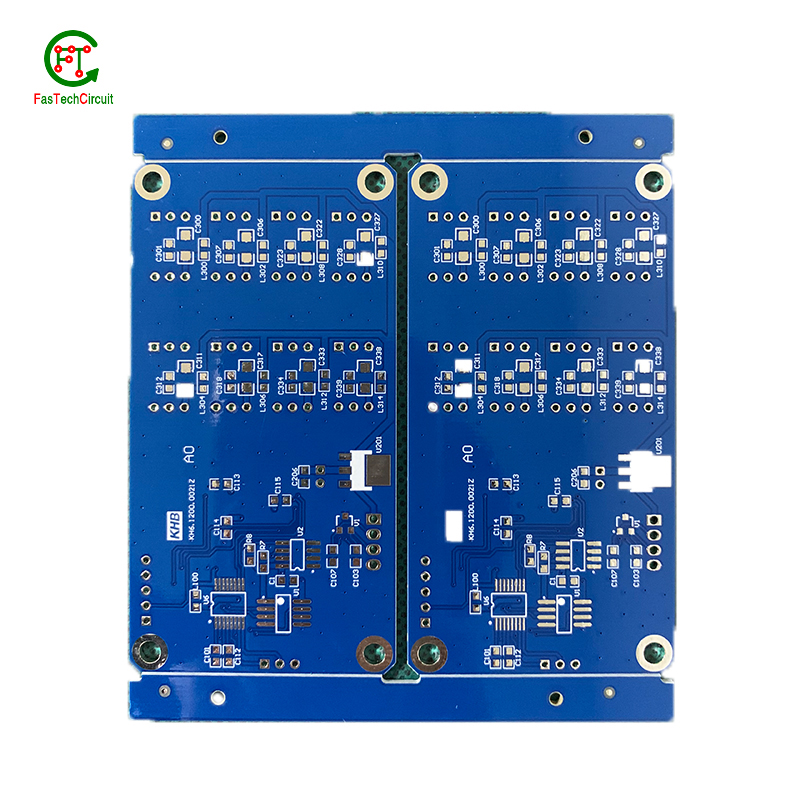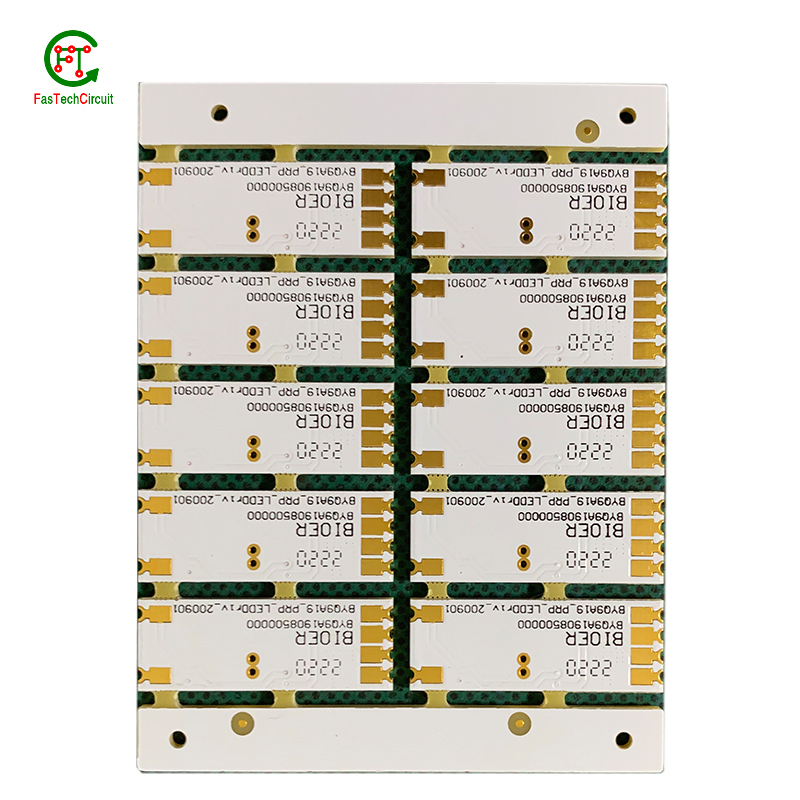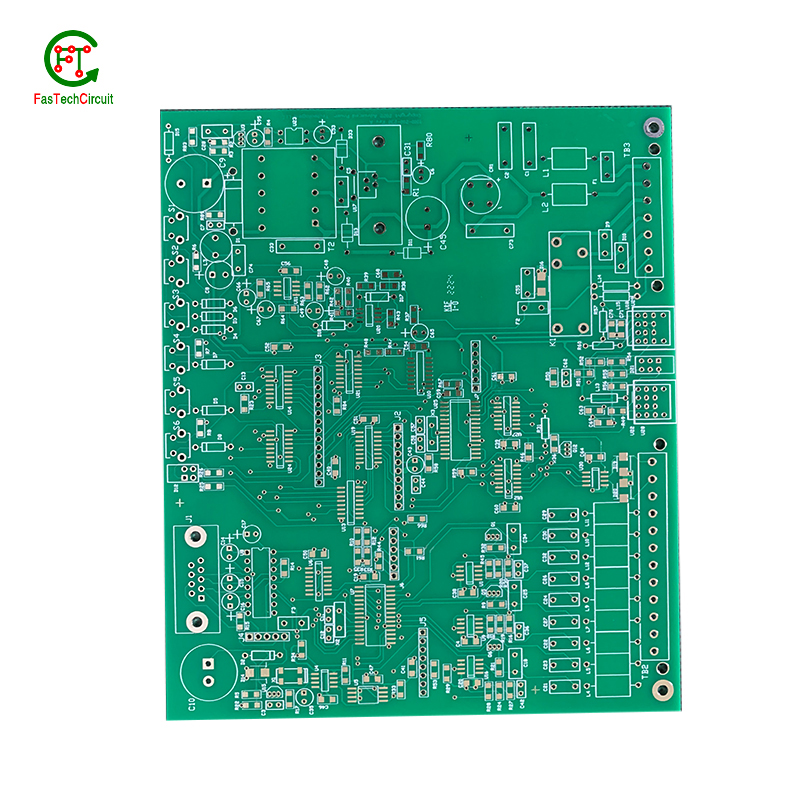What are the advantages of using Multilayer PCBs and how do they enhance the performance of electronic devices?
Multilayer printed circuit boards (PCBs) offer several advantages over single-layer or double-layer PCBs, making them a preferred choice in many electronic device applications. Multilayer PCBs are designed with multiple layers of conductive material separated by insulating layers, providing enhanced functionality and improved performance. In this article, FasTechCircuit will explore the advantages of using multilayer PCBs and how they contribute to the performance of electronic devices.
Hot Tags: About FasTechCircuit ,More products
Advantages of Multilayer PCB:
1. Increased Design Flexibility:
Multilayer PCBs provide increased design flexibility compared to single-layer or double-layer PCBs. The additional layers allow for more complex circuitry and the integration of various components and functions into a compact form factor. Designers can route signals and power planes across multiple layers, enabling greater freedom in circuit layout and reducing the size of the PCB.
2. Higher Density and Component Integration:
Multilayer PCBs support higher component density and integration. The ability to add multiple layers allows for the placement of more components, including active and passive devices, connectors, and integrated circuits (ICs), without compromising the board's size. This higher component density leads to more compact and sophisticated electronic devices.
3. Enhanced Signal Integrity:
Multilayer PCBs offer improved signal integrity by providing dedicated power and ground planes. The power and ground planes act as distributed capacitance and help reduce noise and electromagnetic interference (EMI) in the circuit. This results in better signal quality, reduced cross-talk, and improved overall performance of high-speed digital and analog signals.
4. Efficient Power Distribution:
With multilayer PCBs, power distribution can be optimized by dedicating specific layers for power planes. These power planes help minimize voltage drops, reduce noise, and provide a stable power supply to the components. Efficient power distribution enhances the overall performance and reliability of the electronic device, especially in applications that require high power or have stringent power requirements.
5. Improved Thermal Management:
Multilayer PCBs facilitate effective thermal management by incorporating thermal vias and conducting heat away from heat-generating components. The additional layers allow for the placement of thermal vias that connect to metal heat sinks or thermal planes, enabling efficient heat dissipation. This helps prevent overheating, ensures component reliability, and extends the lifespan of the electronic device.
6. Enhanced Electromagnetic Compatibility (EMC):
Multilayer PCBs are designed to enhance electromagnetic compatibility by reducing EMI and susceptibility to external electromagnetic interference. The multiple layers, along with dedicated ground planes and shielding techniques, help contain and minimize electromagnetic emissions and provide a more controlled electromagnetic environment. This is especially important for devices operating in sensitive environments or industries with strict EMC regulations.
7. Reliable Power and Signal Integrity:
The multiple layers of a multilayer PCB provide redundancy and improve the reliability of power and signal connections. If a connection or trace is interrupted on one layer, an alternative pathway on another layer can be utilized, ensuring uninterrupted functionality. This redundancy contributes to the overall reliability and robustness of the electronic device.
8. Design for Manufacturability (DFM) and Assembly (DFA):
Multilayer PCBs offer advantages in terms of design for manufacturability and assembly. The use of multiple layers simplifies the routing of traces and reduces the complexity of interconnections. This simplification makes the PCB easier to manufacture and assemble, reducing the chances of errors and improving production yield.
9. Space and Weight Reduction:
Multilayer PCBs allow for the integration of more components and functions into a smaller space, leading to space reduction in the overall device design. This is particularly advantageous for portable or miniaturized electronic devices where size and weight are critical factors.
Using multilayer PCB (Printed Circuit Board) has the following advantages and can improve the performance of electronic equipment. First of all, multi-layer PCB allows higher component density and miniaturization. Through the design of multi-layer wire tracing, more components can be accommodated in a limited space, and the miniaturization and compact design of electronic equipment can be realized. Secondly, multi-layer PCB provides better signal integrity, reduces electromagnetic interference and crosstalk through shielding layers, maintains signal integrity, reduces noise, and ensures reliability and high-quality performance of electronic equipment. In addition, multi-layer PCB has better power distribution capability, reduces power interference and voltage drop through multi-layer power planes, ensures stable and efficient power distribution, and is especially suitable for devices with high power requirements. In addition, multi-layer PCBs provide better routing and design flexibility. Through multi-layer wire tracing, designers can create complex and fine routing patterns, optimize signal paths, reduce signal delays, achieve efficient use of space and better component organization , thereby improving performance and ease of manufacture. In addition, multi-layer PCB can also reduce electromagnetic radiation and improve thermal management. Through multi-layer shielding layer and heat dissipation design, electromagnetic radiation and heat generation can be reduced, ensuring that equipment complies with electromagnetic compatibility (EMC) standards, preventing overheating, and ensuring the safety of electronic equipment. long-term reliability. To sum up, the advantages of multi-layer PCB make it the first choice for complex electronic designs, which can provide high density, improve signal integrity, enhance power distribution, flexible wiring and design, reduce electromagnetic radiation and improve thermal management, thereby improving electronic equipment. performance.
RELATED NEWS
pcb board manufacturing How To Contact US
PCB from 1 to 30 layers, HDI, Heavy Copper, Rigid-flex board with "pcb board manufacturing One-Stop" service.






